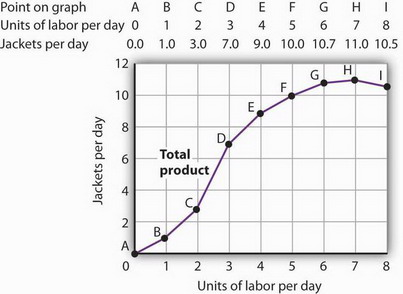Production in the Short Run
Short run is a period of time when at least one of the factors of production is fixed. Usually labour is the easiest factor to change. Thus in short run a firm can increase production only by employing more labour because no more land or capital is available. Thus, labour is the variable factor in the short run.
'Short run' for various firms is different. It may be few days for some industries and may be years for some industries.
Production function
It is the equation that expresses the relationship between the quantities of productive factors (such as labour and capital) used and the amount of product obtained. It states the amount of product that can be obtained from every combination of factors, assuming that the most efficient available methods of production are used.

Law of increasing returns
This states that as more units of variable factor are added to a fixed factor, output will first rise more than proportionately. Thus, the firm experiences increasing returns.
Law of diminishing returns
The law states that as more units of a variable factor are added to a fixed factor, there will come a point when output will rise less than proportionately. The firm experiences diminishing returns.

Marginal product
Marginal product of labour is the change in total output when one more worker is employed.
It can be calculated as
Change in total product |
Change in number of workers |
Average product
Average product of labour is the total product divided by the number of workers producing it. In other words, output each worker.
Total product |
Number of workers |





